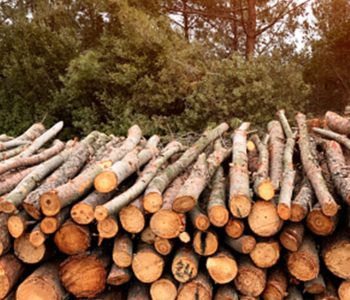Introduction
The Sustainable Wood to Fuel and Fish Feed (SWF3) program, spearheaded by the University of Maine and funded by the National Institute of Food and Agriculture, aims to revolutionize the utilization of low-grade woody biomass (LWB). This innovative initiative seeks to produce sustainable aviation fuel (SAF) and fish feed ingredients from millions of tons of LWB, addressing pressing challenges in both the energy and aquaculture sectors. With a project timeline running from March 1, 2024, to February 28, 2029, the SWF3 initiative is set to make significant contributions to the US bioeconomy.
The Challenge of Low-Grade Woody Biomass
The accumulation of LWB, primarily consisting of small-diameter trees, branches, and other low-value wood waste, has become a pressing issue due to decades of fire suppression, long-term drought, and declining demand for traditional pulp and paper production. Despite its abundance, this biomass has a limited market, leading to lost economic opportunities for forest owners. By leveraging this underutilized resource, the SWF3 program aims to unlock additional income streams for forest owners, encouraging sustainable forest management practices and improving overall forest health.
Innovative Approaches to Biorefinery
The SWF3 program’s core objective is to develop a biorefinery framework that enables the co-production of SAF and fish feed from LWB. This process begins with preprocessing LWB to optimize its conversion into renewable jet fuel and fish feed ingredients. Key research activities include:
- Hydrothermal Liquefaction (HTL): Researchers will optimize the HTL process to convert biomass into bio-oil, identifying the ideal biomass composition, residence time, and temperature for maximum yield and quality.
- Chemical Catalysis: Innovative chemical catalysts will be engineered to upgrade HTL oil into aviation fuels, enhancing the viability of SAF production.
- Fish Feed Production: Using fermentation techniques, the program will explore the potential of microbial-derived products from LWB sugars as sustainable fish feed ingredients. Growth performance and digestibility studies will evaluate their effectiveness.
- AI Integration: The application of artificial intelligence will guide the HTL process and inform techno-economic and life cycle assessments, quantifying the benefits of co-producing SAF and fish feed.
Educational and Extension Goals
The SWF3 program places a strong emphasis on education and community engagement. Its objectives include:
- Developing course modules for undergraduate and graduate programs in chemical engineering, aquaculture, and social sciences, integrating research findings into the curriculum.
- Actively involving underserved communities in research activities, promoting diversity within the bioeconomy workforce.
- Delivering a multidisciplinary online certificate program to equip students with essential bioeconomy competencies.
The program also aims to educate critical stakeholders, including forest owners, aquaculture farmers, policymakers, and industry representatives, about the sustainable benefits and commercial potential of SWF3 technologies through various outreach efforts such as YouTube videos, infographics, and policy briefs.
Conclusions
The Sustainable Wood to Fuel and Fish Feed initiative represents a groundbreaking step toward enhancing the US bioeconomy by transforming low-grade woody biomass into valuable products. By addressing environmental, economic, and social challenges through innovative research and education, the SWF3 program aims to foster sustainable practices in forestry and aquaculture while contributing to the broader goal of achieving renewable energy targets. As the initiative progresses, it promises to unlock new opportunities for forest owners, improve aquaculture sustainability, and significantly reduce the carbon footprint of the aviation industry.
Source: USDA
You may also like to read: “Canada Invests in Alternative Oilseed Crop Research”
